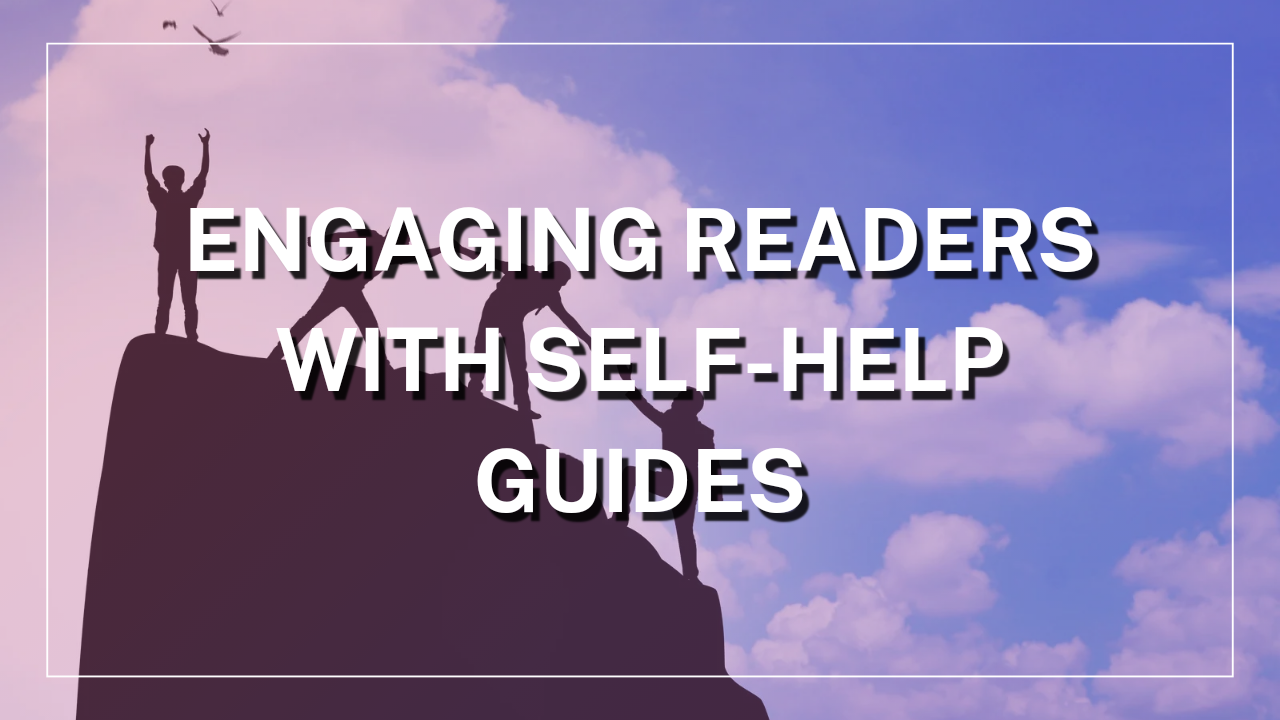Self-help guides can strike a deep chord with readers, building a devoted following and encouraging a feeling of belongingness. Researching and thinking about self-help subjects can help writers get new perspectives and develop personally.
Here are some tips for writing engaging self-help books.
1. Understanding Your Audience: Before writing a guide you need to identify your target audience. You need to know their interest, pain, aspirations, etc. This can be done by studying forums and conducting surveys and research. Finding your target audience and knowing what they want will help you write in a way the audience would engage with your work because it would make the guide seem as if it were written for them. Secondly, it would encourage them to refer to your work whenever they need guidance.
For example, if your target audience is college students, writing a guide on time management skills or study tips would be the perfect choice.
2. Convincing Introduction: While we all have heard the renowned phrase “Don’t judge a book by its cover,” the reality seems to differ. People often tend to judge the book and the author by the way a book starts. Hence, putting effort into the introduction might get you more audience. So, it is very important to write a convincing introduction as it sets the tone for the entire guide. You can do this with a hook — an intriguing question, a fun fact, an interesting story or maybe a relatable incident, which would make the readers curious about your book.
The Introduction chapter of the popular self-help book “Atomic Habits” by James Clear is a great example of how a story at the start of the guide can engage the audience.
3. Incorporating Examples: We can find thousands of advice anywhere and everywhere, but what makes us take action is an example. Offering tangible examples brings abstract ideas to life and facilitates understanding. It improves comprehension practically by demonstrating how an idea may be used in actual circumstances. Examples make it possible to compare several situations, which helps identify trends or outliers. So, to write a self-help guide, we need to add an example to make it more understandable and actionable.
For example, if someone advises you to do exercise, it might not drive you. But, if the same advice is given with an example of how it helped them overcome a health issue or helped their stamina, you might go the extra mile.
4. Being Empathetic: To turn a piece of writing into something people can engage with, you need to add emotions. Writing a guide with just instructions might make it boring and lifeless. Hence, it is important to write in an empathetic way. This can be done by acknowledging the challenges and emotions that the readers might face while following the guide. By demonstrating that the writer is aware of and cares about the reader’s thoughts, feelings, and experiences, empathetic drafting fosters an emotional connection with the reader.
5. Strong Conclusion: A powerful ending can remind readers of the purpose of the material and what they should be expected to accomplish by restating the guide’s primary objective. A concise summary of the key concepts and procedures aids in readers’ comprehension, consolidation, and retention of essential information. A strong conclusion might inspire readers to put what they’ve learned into practice. This can involve calls to action, achievable moves, or more resources for accomplishment.
In general, self-help guides can be quite helpful resources for developing oneself and improving oneself. These guidelines will help you write a self-help guide that will inspire and empower readers to make life-changing decisions in addition to informing and educating them.

